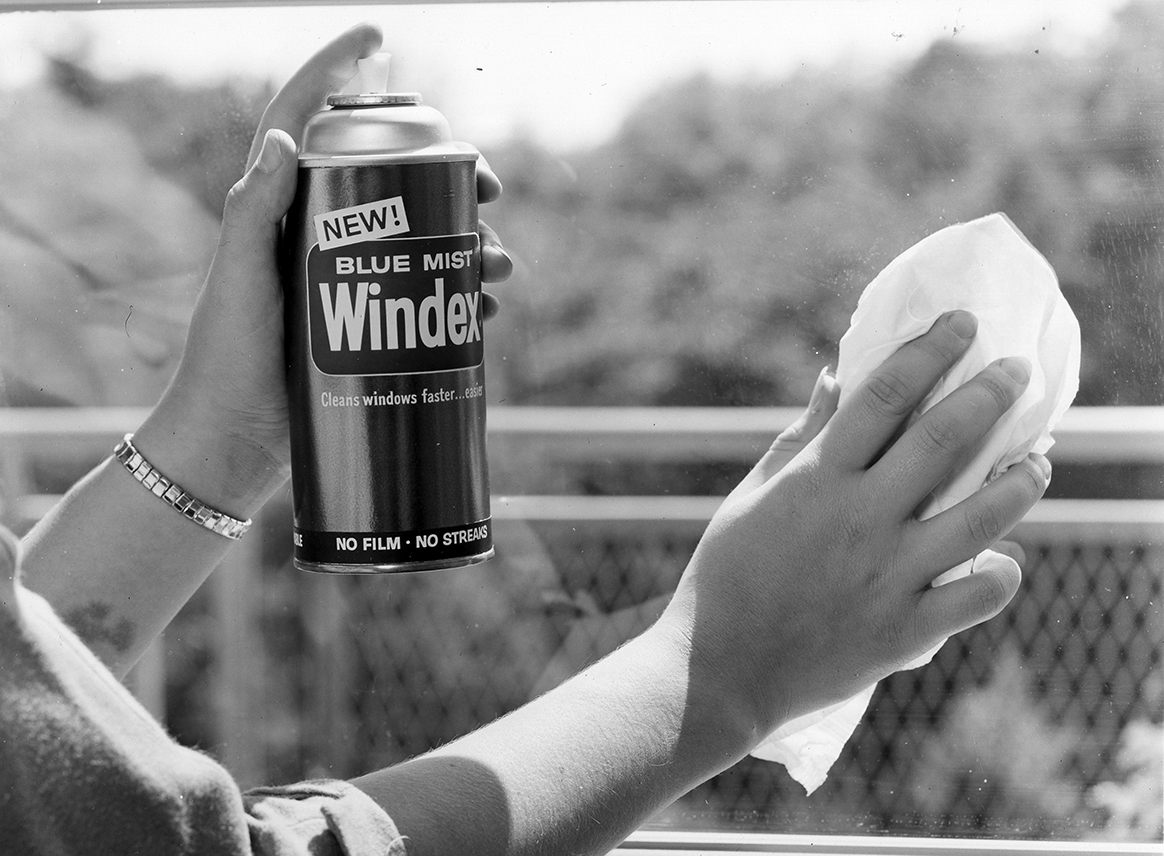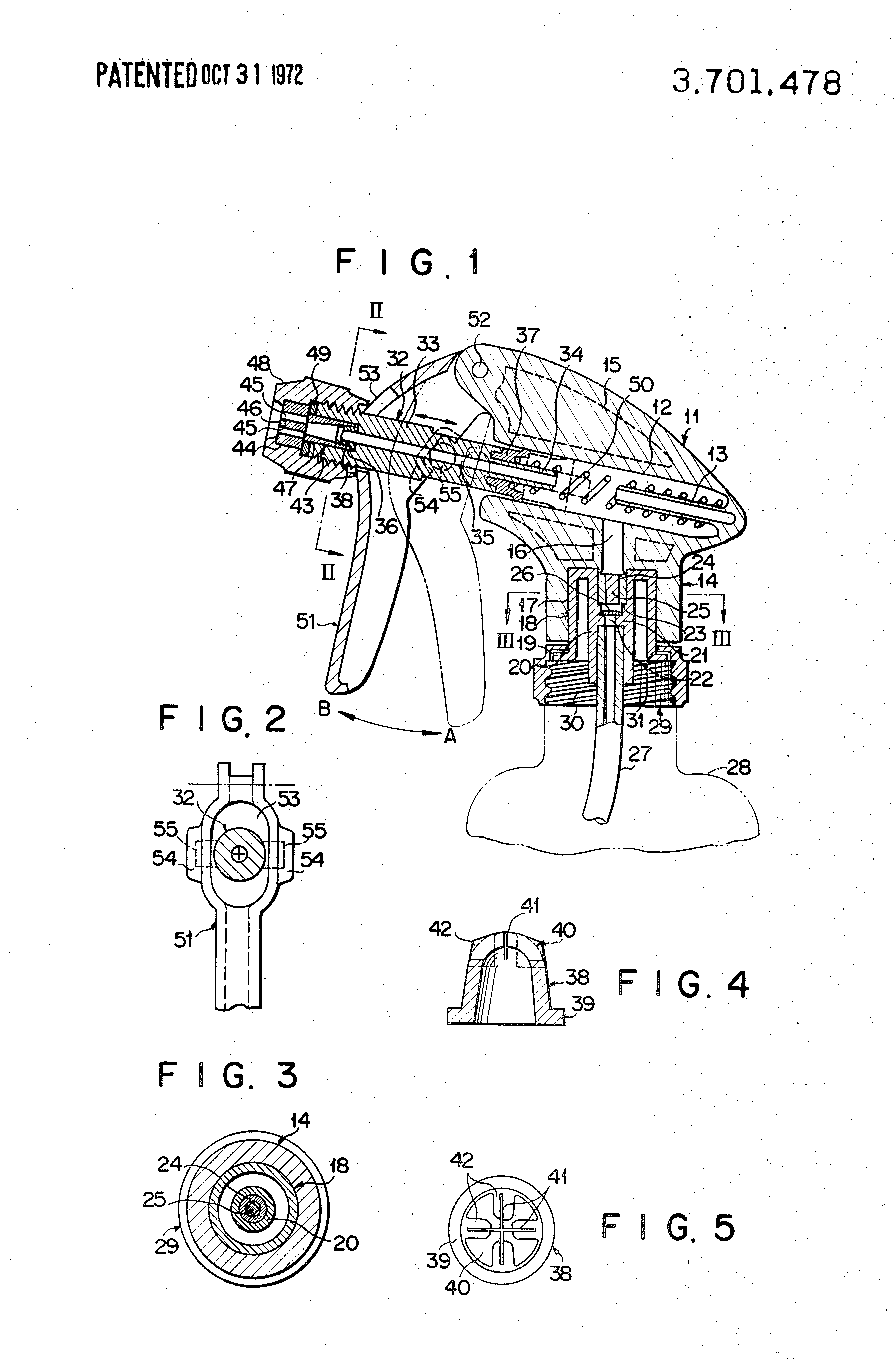A Brief History of Window Cleaning
Windex has been with us for a very long time.

A version of this post originally appeared on Tedium, a twice-weekly newsletter that hunts for the end of the long tail.
For centuries, the average home had windows, but not necessarily glass covering those windows—in part, because glass was really expensive at first, and the flat pane variety that we’re used to didn’t even exist.
But as glass evolved as part of the 20th-century home, it suddenly became important to keep those panes of glass clean. And that meant there was an opportunity for the Philip W. Drackett Company to come about and make it easy.
That manufacturer’s product? Windex, of course, which was invented in 1933 and, 69 years later, famously called a wonder drug in My Big Fat Greek Wedding.
“My dad believed in two things: That Greeks should educate non Greeks about being Greek and every ailment from psoriasis to poison ivy can be cured with Windex,” Nia Vardalos’ character says in the movie. People these days, meanwhile, have taken to “drinking” it for YouTube views, highlighting that, somewhere along the way, Windex became something more than simply a way to keep our windows clean. (For the record, we don’t recommend using Windex as a treatment for anything, other than dirty windows.)
It was the Drackett Company that started it all, in a time when new consumer chemicals were being rolled out at a rapid pace. Indeed, the 1933 invention of Windex wasn’t even the first major innovation to come from Drackett—that was Drano, the powdery lye-and-aluminum-and-dyed-salt solution that came about in the early 1920s. That once-a-week drain concoction was invented by Philip and his son, Harry. (The elder Drackett died just a few years later, in 1927.)
The company succeeded in consumer products after expanding from its roots as a maker of industrial chemicals. That can be a tough jump to make, but the company was able to pull it off in no small part thanks to smart marketing—formulated by Sally Drackett, Philip’s wife, who came up with the name and the symbol over the ā, to ensure proper pronunciation.
A decade after finding its footing in the consumer market, Harry followed up by coming up with household window cleaner—something that proved a winner for the company. Like his dad, Harry looked at consumer trends of the era: Like indoor plumbing’s growth immediately after World War I, windows were having a moment in the Great Depression era. Cars used them, obviously, and they were becoming a common part of homes.
But it was not necessarily a good moment for a new window cleaner—at least on the surface.
“[T]he timing seemingly could not have been worse,” Cincinnati Post reporter Barry M. Horseman wrote in 1999. “It was the depth of the Depression, when clean windows were the least of many American families’ concerns. This was a marketing nightmare compounded by having to compete not just with other similar products but with ‘free’ water.”

Still, Windex, quickly found a place for its product in homes, after first being marketed to car owners, eventually becoming an arguably bigger hit than Drano, which is saying a lot.
Part of Windex’s surge in popularity, in fact, might have been, in its packaging, since another innovation Drackett deserves credit for is popularizing a container type for not-safe-to-drink chemical, one which you’d recognize: the plastic spray bottle.
The weird thing about Drackett was that Windex and Drano were not the only things going on with the company at the time. The firm had a relationship with Henry Ford, who was fascinated by the manufacturing potential of soybeans.
Ford worked closely with George Washington Carver on this endeavor, with the duo hoping to use their smarts in agriculture and manufacturing (along with Ford’s massive soy fields) to help create items that would eventually forge new industries by killing two birds with one soybean.
Most notably, this led to the creation of the “Soybean car,” a device that was made almost entirely with naturally-occurring plastics derived from soy, hemp, and other versatile plants. It was a weird idea.
The car turned out to be a bit of a bust, but their experimenting did help Drackett move into plastics, and, eventually, the spray bottle.

Over the years, Drackett sold its sprayers in a variety of styles, including a metal nozzle that you press down on. One early plastic model was reminiscent of the sprayers on bottles of the modern sore throat medicine Chloraseptic. Early on—out of a mixture of necessity due to the fragile nature of early plastics, and to encourage re-use—the company even sold Windex sprayers separately, rather than including them with the solution.
During this same period, Drackett had built a reputation for experimenting with soy-based plastics, which likely helped inspire much of the company’s work on its spray bottle designs, even if much of that soy-based plastic never actually made it to market.
But, eventually, Drackett moved away from soybeans entirely, in part because the sector was pushing them toward food production rather than industrial uses. (Nearby Worthington, Ohio, noted for its influence on meat analogues, was among those that pushed Drackett to use their formidable soy resources for making veggie food.) But the move toward plastics in general stuck—with the company continuing to improve its spray-bottle designs.
Drackett was eventually bought out by larger companies, and its brands are now a part of S. C. Johnson & Son. But the efforts the company put into spray bottles drove the cleaning industry forward, and presaged a solution for cleaning supplies that proved especially effective: The gun-style trigger sprayer, an invention of Japan’s Tetsuya Tada in the late 1950s, which quickly took over the cleaning supplies aisle of the grocery store. Windex headed in that general direction, itself, moving toward its now-standard design by the ‘70s.
Tada, who died in 2015, was heartfelt about the effect that his engineering work had on the broader world.
“I firmly believe that all of this is making a humble but significant contribution to the current protection of the ozone layer, which is so essential to all life on our planet including, of course, mankind,” Tara wrote on the website for his company, Canyon Corporation.
It’s a quiet innovation—certainly, we don’t talk about it much—but it probably did in fact change the world for the better.

Of course, Windex isn’t the only window-cleaning device that cleans up our view of the outside world.
The squeegee has, in one form or another, existed for a couple hundred years—but not necessarily for glass. At first, in fact, it had something of a nautical association. One of the earliest literary references, in fact, comes from an icon of the sea: Author Herman Melville.
“Finally, a grand flooding takes place, and the decks are remorselessly thrashed with dry swabs, after which an extraordinary implement—a sort of leathern hoe called a ‘squilgee’ is used to scrape and squeeze the last dribblings of water from the planks,“ Melville wrote in 1850’s White-jacket: or, The world in a man-of-war, a novel published just a year before his 1851 masterwork Moby Dick. “Concerning this ‘squilgee,’ I think something of drawing up a memoir, and reading it before the Academy of Arts and Sciences. It is a most curious affair.”
(In case you’re wondering why he said “squilgee” instead of “squeegee,” World Wide Words notes that the word competed with “squeegee” for decades as the one most commonly used, although “squeegee” was first. Much as in Melville’s reference, it was initially used in a nautical context.)
Slowly but surely, however, the squeegee became most commonly associated with glass in two specific ways: With window-washers on vehicles, and with the large, flat rubberized cleaners used on windows, especially for high rises.

The modern form of the device came about in 1936, when Italian immigrant Ettore Steccone filed a patent for a single-blade squeegee, a device that improved upon professional window-washing tools significantly.
“The main object of the present invention is to provide a Squeegee that is operative to remove liquids and dirt efficiently, within a wide range of angles and a wide range of pressures,” the patent filing stated.
Ettore, a company founded by Steccone and still active to this day, is held up as the gold standard of squeegee-based window washing.
Window cleaning is kind of a dull job, even with tools like Windex and squeegees to simplify things. And even if you work on a skyscraper—inside or out.
But sometimes, the basic window cleaning tools represent more than that. Sometimes, window cleaning can even save the day.
A fairly dramatic example of this is the squeegee that helped a group of six men get out of an elevator at the World Trade Center on September 11, 2001. Jan Demczur and five other men were stuck in an elevator that had stalled at the 50th floor of the World Trade Center’s North Tower. They were able to pry the elevator doors open, but as they were on an express elevator, there was no entrance on the other side—they would have to make one.
They had no proper tool to help with this, but Demczur had a squeegee. For an hour and a half, the men used its brass handle to cut through the wall, making it out of the elevator with only minutes to spare.
The handle is now in the 9/11 collection at the National Museum of American History, and Demczur later appeared on the cover of American Window Cleaner magazine, with Demczur portrayed in a superhero costume.
On a dark day, it was a shining moment for a fundamental tool—even if, in that moment, there were no windows to be seen.
A version of this post originally appeared on Tedium, a twice-weekly newsletter that hunts for the end of the long tail.











Follow us on Twitter to get the latest on the world's hidden wonders.
Like us on Facebook to get the latest on the world's hidden wonders.
Follow us on Twitter Like us on Facebook